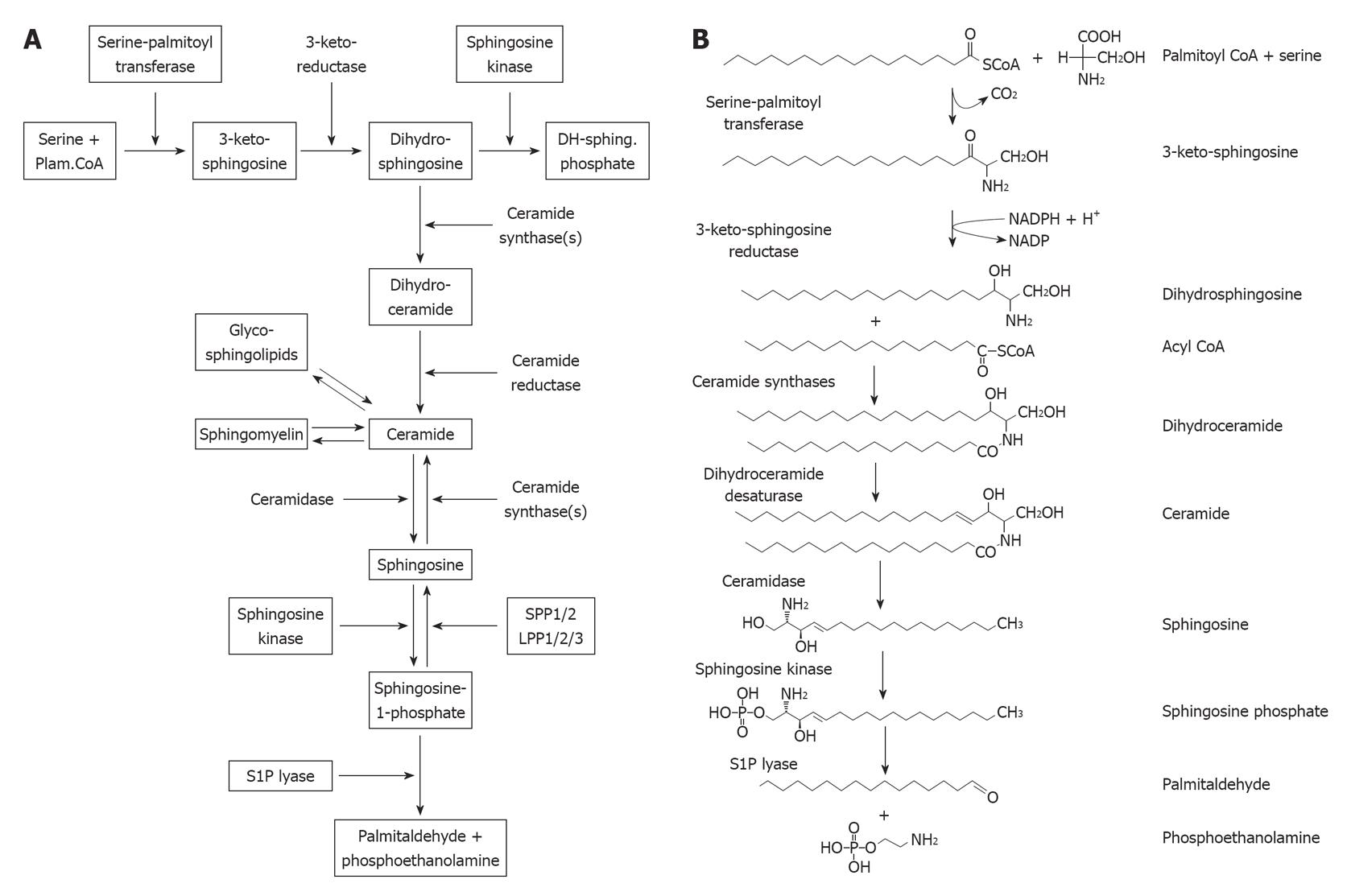Copyright
©2010 Baishideng Publishing Group Co.
World J Biol Chem. Dec 26, 2010; 1(12): 362-368
Published online Dec 26, 2010. doi: 10.4331/wjbc.v1.i12.362
Published online Dec 26, 2010. doi: 10.4331/wjbc.v1.i12.362
Figure 1 The sphingolipid metabolic network.
A: Schematic representation of the sphingolipid metabolic pathway. Note that the degradative enzymes for sphingosine kinase, the specific sphingosine-1-phosphate phosphatases SPP1/2 and the sphingosine-1-phosphate lyase are intrinsic membrane proteins of the endoplasmic reticulum. Similarly, the enzymes for ceramide biosynthesis, serine palmitoyl transferase, 3-keto sphingosine reductase, and the ceramide synthases, are intrinsic membrane enzymes of the endoplasmic reticulum; B: Structures of lipids in the sphingosine and ceramide biosynthetic pathway. Note that sphingosine is initially produced by the hydrolysis of ceramide by ceramidases. Dihydroceramide is directly produced by the de novo biosynthetic pathway of ceramide biosynthesis. Modified from Siow et al[44], 2010.
- Citation: Wattenberg BW. Role of sphingosine kinase localization in sphingolipid signaling. World J Biol Chem 2010; 1(12): 362-368
- URL: https://www.wjgnet.com/1949-8454/full/v1/i12/362.htm
- DOI: https://dx.doi.org/10.4331/wjbc.v1.i12.362









